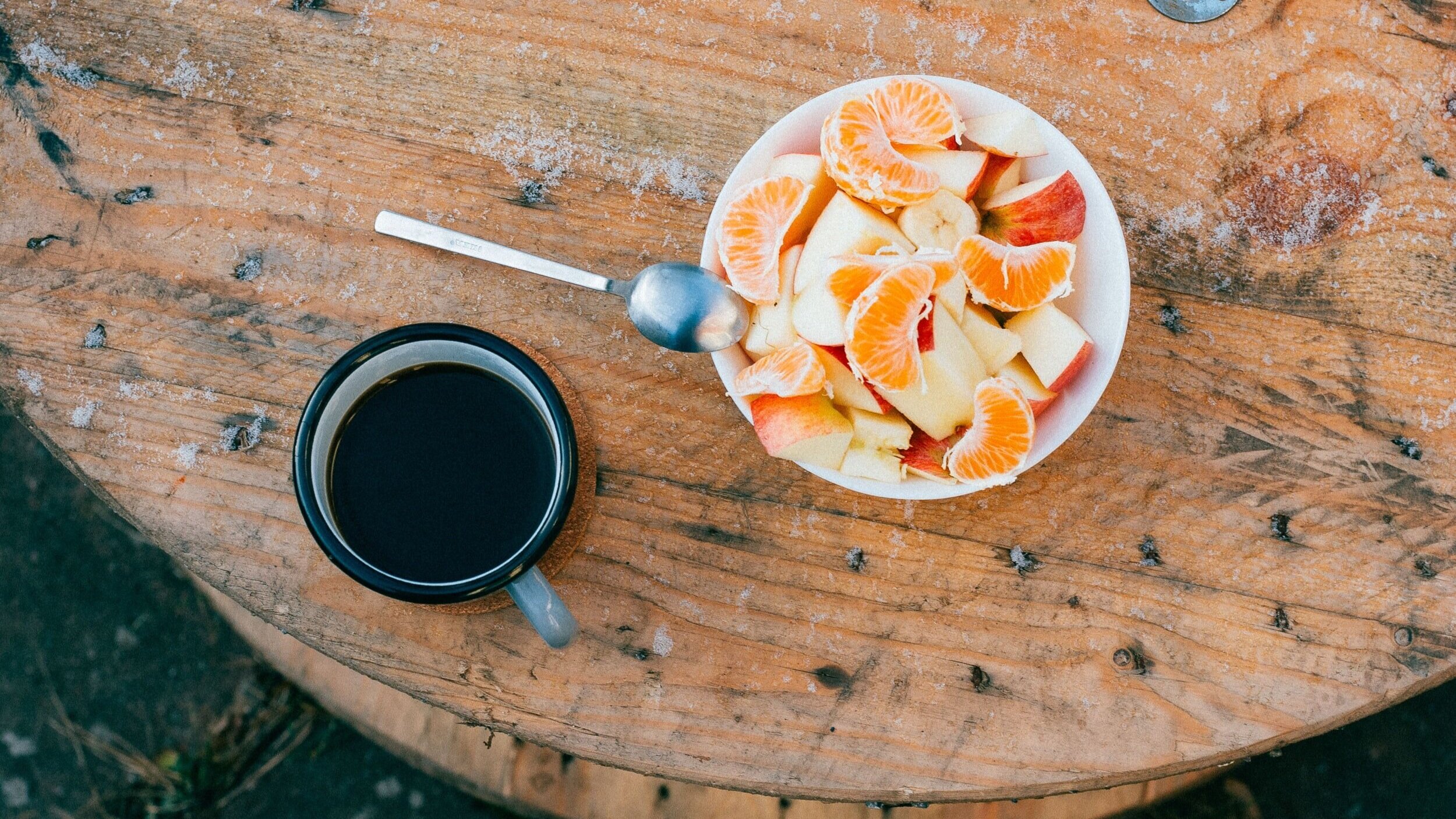#NaturesCerealChallenge
There’s a new trend going around called the “Nature's Cereal Challenge.” You might have seen celebs or influencers on social media trying this out. To make this, you mix different fruits like blueberries, strawberries, and pomegranates in a bowl and top with coconut water and ice cubes. If you’re hearing this and think it sounds delicious, I agree. Fruit is super tasty! If you believe this is healthy, you’re also not wrong. Fruit is nutrient-dense, high in fiber, and coconut water contains electrolytes. Seems great! So what’s the problem?
Labeling foods as healthy vs. unhealthy.
Many who promote the Nature's Cereal Challenge claim it’s a natural alternative to cereal. What they are saying is eating fruit in water is healthier than eating grain-based cereal in milk. Basically, fruit: good-cereal: bad. Major red flag! If you read my last blog post, The Best Diet Plan, you know labeling food good and bad is an unhealthy practice. You’re not good because you ate fruit or bad because you ate cereal. Food has no moral value! When we pit foods against each other under the disguise of “health,” all we do is increase unhealthy eating habits. If this were a recipe for a tasty fruit dish, there would be less of a problem. However, many are promoting this as a “good” alternative to processed cereal.
How to define natural and processed foods?
The claim is that fruit being natural makes this a healthy food. In that case, we must first define the term ‘natural.’ The Food and Drug Administration, or FDA, is responsible for determining food and label regulations. For example, you can only use the title ‘organic’ on products that have been grown in a specific way. However, there are no hard regulations on what companies can label as ‘natural.’ The loose understanding is that the term ‘natural’ applies to foods without artificial ingredients. However, this doesn’t include pesticide use, production, processing, or manufacturing practices. When it comes to nutrition, the FDA “did not consider whether the term “natural” should describe any nutritional or other health benefits.” This means that anyone can put the phrase “made with all-natural ingredients” on any product. It has nothing to do with the nutritional content!
To understand why this term is so confusing, consider this question: Isn’t all food natural? Where does it come from if not from nature? Isn’t regular cereal natural too? Most cereals are made from grains, primarily corn, wheat, oats, and rice. Is this to say that grains grown in nature aren’t natural? You might say sure they are, but then they get processed and made into a sugary, unhealthy, unnatural product. Processed foods have come to be synonymous with unhealthy foods. This is usually in reference to fast foods, fatty foods, sugary desserts, or anything else we deem harmful. But aren’t almost all foods processed? You’re not eating hummus, cauliflower rice, almond milk, or kale chips in their raw and most natural form. These foods are all labeled healthy by society, or in this case, influencers, and are often called natural and unprocessed. However, unless you’re eating it raw, it’s gone through some processing. Sure, hummus and Doritos have different nutritional content, but they both are processed. Even those healthy foods can have “unnatural” additives like flavor aids, appearance enhancers, or preservatives. Unnatural occurring substances like Vitamin D and calcium are often added to Almond milk to boost the nutritional content. Does this mean that almond milk is no longer a natural healthy product? Of course not. In this case, these additives increase the nutritional value!
Diet culture gimmicks.
As you can see, nutrition can quickly become confusing, especially as policies, labels, marketing, and sales get involved. Marketers have taken these terms and twisted them to fit their needs. The diet culture industry takes nutrition findings to extremes in order to attract you to whatever product they're selling.
Take a look at how health headlines swing from one extreme to the other:
Fat promotes heart disease and causes weight gain. Fat-free products are healthy! → Fat is good and helps you lose weight. Try the Keto diet.
Avoid white foods. Eat the rainbow! Different color foods are best for you. → Replace everything with cauliflower.
Sugar is the problem. It causes obesity. Don’t eat fruit it’s too high in sugar. → Eat nature’s cereal, fruit, and coconut water is a healthy alternative to grain-based cereal.
All these headlines work to promote a particular diet and usually the products that go along with it. Diet culture accepts eating that “weight loss keto bar” even though it’s processed and full of additives. At the same time, it preaches not to eat cereal because it’s processed and unhealthy. You see, basic nutrition principles like eating a balanced diet containing nutrient-rich foods AND foods you enjoy is boring. It doesn’t make flashy headlines or sell products. Diet culture presents health extremes as the answer. It’s no wonder we don’t know what to eat when constantly being told conflicting information!
Nutrition science and research can be very complicated at times. There will probably be many more trends like this one.
Here are some steps you can take to become an educated consumer:
Learn and understand basic nutrition principles. Follow me on social media for more health and wellness content.
Don’t automatically believe every headline, trend, or influencer. If you see a new diet or superfood trending, research it for yourself.
Check the source the information is coming from. Do they have any nutrition background? Do they apply basic nutrition principles, or are they trying to promote a person/product? Is there any research or evidence to back up those claims?
Now the next time a food trend pops up, you can enjoy it (if you choose) without falling prey to diet culture and false health claims.
.
.
.
Sources
http://www.madehow.com/Volume-3/Cereal.html#ixzz6pIBw6p8D
https://www.fda.gov/food/food-labeling-nutrition/use-term-natural-food-labeling
